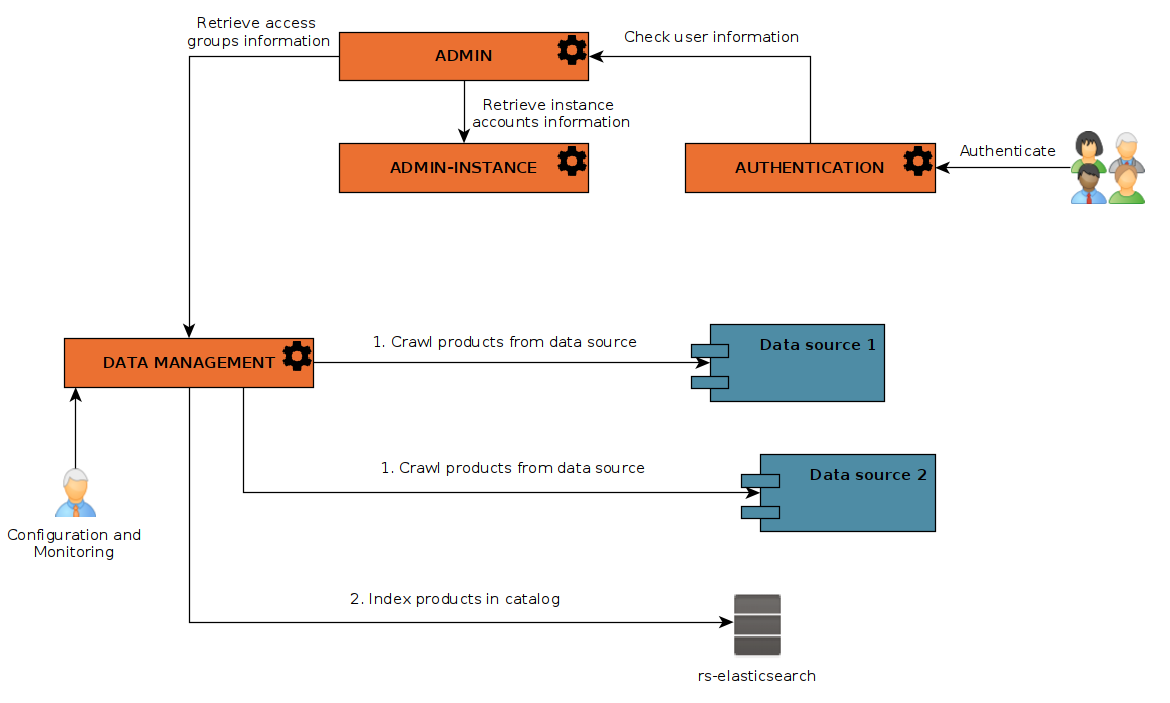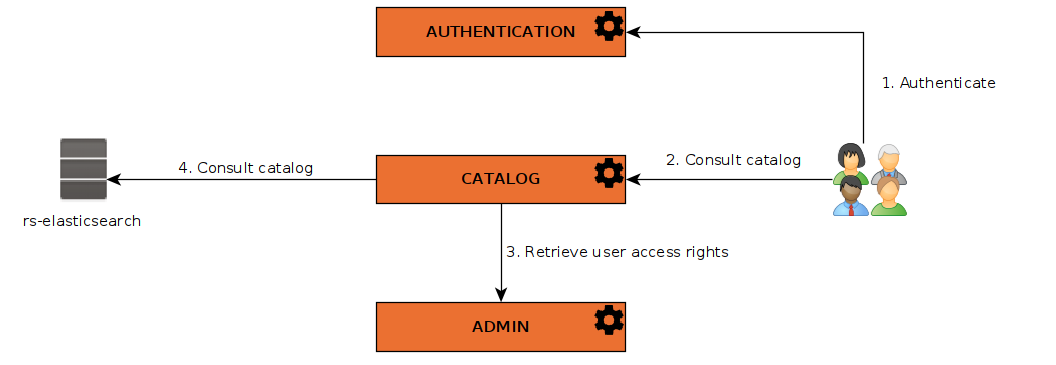Meta Catalog services
Meta-Catalog services are a set of mandatory REGARDS services that allows to :
- populate a Meta-Catalog using data source(s)
- allows users to consult indexed Products
To do so, REGARDS provides following services :
- rs-admin-instance : this instance service manages projects and shared user accounts.
- rs-admin : Manage project users and roles
- rs-authentication : Manage REGARDS authentication system(s)
- rs-dam : Populate the REGARDS meta-catalog from existing data source(s), manage Data models and compute access rights.
- rs-catalog: Consult, search and access REGARDS meta-catalog
Populate meta-catalog
The main concept behind REGARDS meta-catalog population is the service Data Management or rs-dam, that consults one or many data source(s) to retrieve products to index. These products are pushed and centralized inside an ElasticSearch index, a powerful and fast search engine. These products, that can be retrieved from various data source(s), are homogenize thanks to data model(s) and datasets and protected using users access rights.
Data sources is a key concept to understand in Regards Meta Catalog. You can connect any compatible data source but Regards provides two data source(s) of his own : OAIS Data source and GeoJson Data source.
Data models are the definition of the metadata of your products.
Each Regards project can define as many data model(s) as needed.

The Data Management or rs-dam microservice crawl products from data source(s),
map the results with the associated data model(s) and then insert them into Elasticsearch Index.
Data sources and data models need some configuration from an administrator.
To learn more about rs-dam and crawling system,
see rs-dam microservice documentation.
Consult meta-catalog
Once the Elasticsearch index is populated, Catalog
microservice can be used to consult products metadata and to download products files.
To learn more about catalog service and its multiple search engines like STAC or OpenSearch,
see Catalog.
The diagram below explains the interactions between microservices for this purpose:
